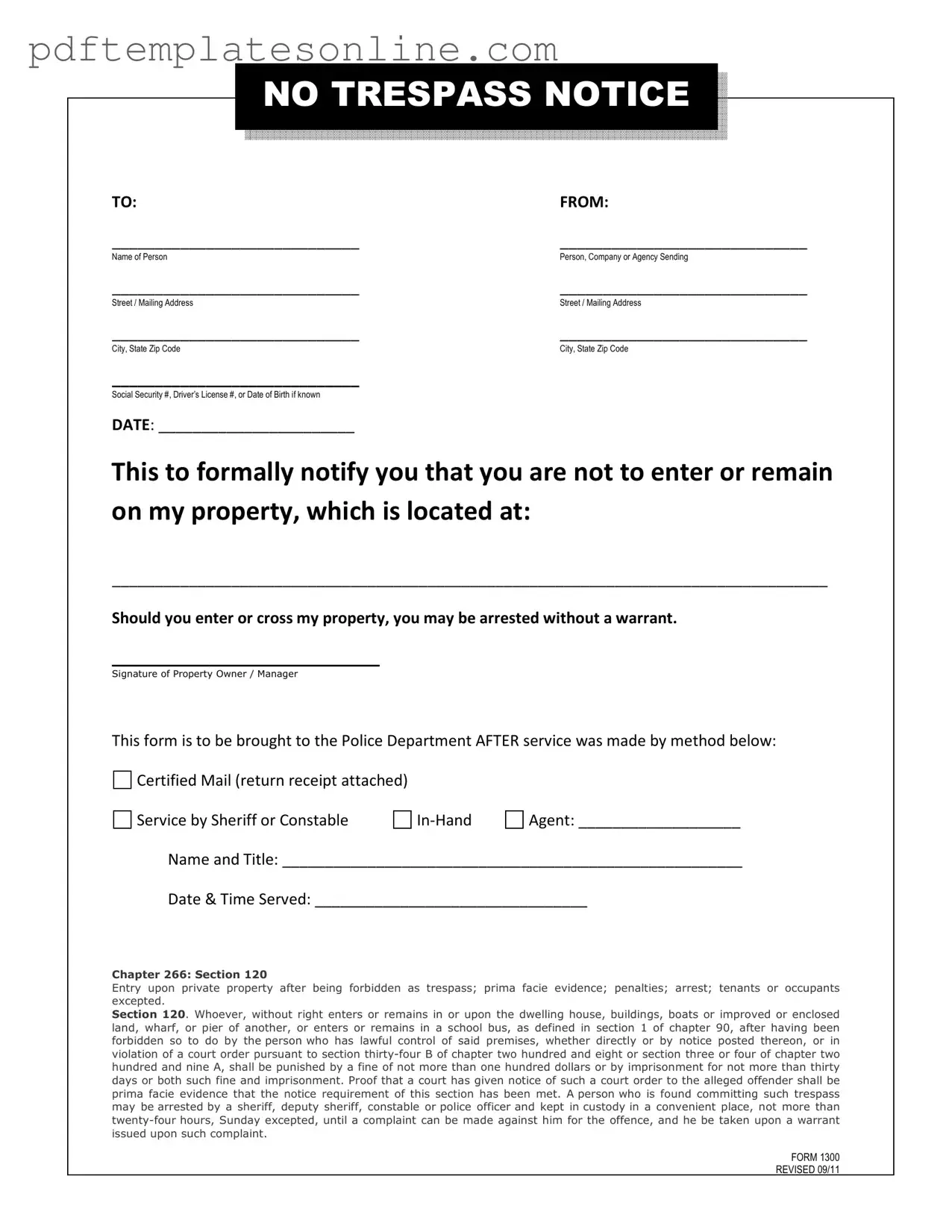Filling out a No Trespassing Letter form can seem straightforward, but many people make common mistakes that can undermine its effectiveness. One of the most frequent errors is failing to provide complete information in the "TO" and "FROM" sections. Leaving these fields blank or incomplete may lead to confusion about who the letter is directed to and who is issuing it.
Another mistake is neglecting to clearly specify the property location. The section meant for the property address should be filled out accurately. If the address is vague or incorrect, it may not be clear to the recipient where they are prohibited from entering. This can weaken the legal standing of the notice.
Some individuals forget to include the date. A No Trespassing Letter should always have a date to establish when the notice was issued. Without a date, it can be challenging to prove when the recipient was informed of the trespassing prohibition.
Additionally, people often overlook the importance of signing the letter. A signature adds authenticity and shows that the notice is official. Without a signature, the letter may be dismissed as informal or not taken seriously.
Using improper delivery methods is another common mistake. The form specifies that the notice should be delivered via certified mail, by a sheriff, or in person. If the letter is not delivered correctly, it may not hold up in court if enforcement becomes necessary.
Finally, failing to keep a copy of the completed form is a critical oversight. Retaining a copy ensures you have proof of the notice and the delivery method used. This documentation can be vital if legal action is required in the future.
